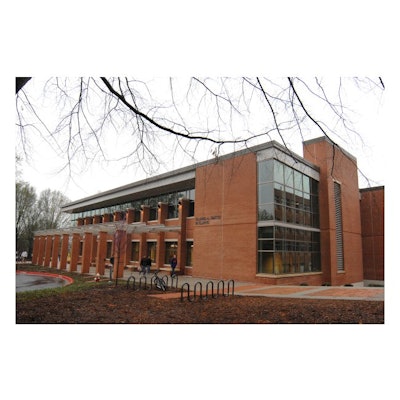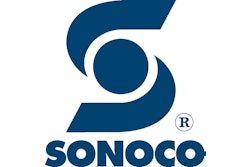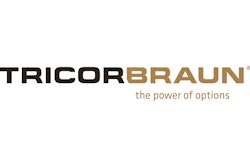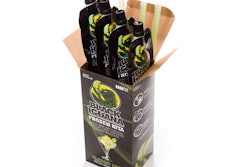
Clemson University's Harris A. Smith Building, home to the Sonoco Institute of Packaging Design and Graphics.
On March 31, Clemson University dedicated the Harris A. Smith Building, home to the Sonoco Institute of Packaging Design and Graphics. It will be where students and researchers will study not only how packaging is designed and manufactured, but also how products will be perceived, marketed, and consumed in the future.
The Harris A. Smith Building is the only university program in the country that will bring together the disciplines of packaging science, graphics communications, materials, environmental science, manufacturing, marketing, and psychology to study packaging methods, said Chip Tonkin, the institute’s director.
The institute initially will focus on four areas:
* Designing environmentally sustainable packages;
* Developing electronic films that can be printed on packages to create displays, track shipments, or apply environmental or biological sensors;
* Testing the impact of package design on consumer attention, buying patterns, use, and disposal in its consumer experience lab; and
* Integrating the multiple steps in package design and construction into a single workflow.
“We think in these four areas we can make a name for ourselves,” Tonkin said. “No one has really looked at packaging as a core competency.”
The 28,000-sq-ft building is named for Harris A. Smith of Atlanta, former chairman, president, and CEO of Smith Container Corp., founded by the Smith family in 1907. He sold the company a few years ago and saw an opportunity to create a global center for packaging innovation by investing in Clemson.
Accompanied by members of his family, Smith said, “We thank Clemson University for giving us the opportunity 102 years later to remain actively engaged in an industry that has seen three generations of family involvement.”
Smith made gifts and pledges of $3.7 million and Sonoco Products Co. of Hartsville, SC, $2.5 million for the construction of the building and to launch the packaging institute. Most of the money to pay for the $7 million structure was donated. Other donors gave equipment that will be used to train students and help industry partners research packaging methods, technology, and design.
Tonkin said the goal is to make the institute self-supporting with revenue streams from faculty research, assistantships, intellectual property, and industry fees and contributions.
Clemson president James F. Barker said the packaging design and graphics communications programs will deliver about 100 highly sought-after graduates to good jobs in the industry every year.
“The facility we dedicate today is for and about these students,” he said. “It is about innovation. And it is about the true collaboration that exists among our industry partners, our outstanding faculty, and our students.”
See also the news video at www.wyff4.com/video/19058892/index.html
For further information, contact Chip Tonkin at 864/656-5686, or via email at [email protected]. Also visit www.clemson.edu/centers-institutes/sonoco.
The Harris A. Smith Building is the only university program in the country that will bring together the disciplines of packaging science, graphics communications, materials, environmental science, manufacturing, marketing, and psychology to study packaging methods, said Chip Tonkin, the institute’s director.
The institute initially will focus on four areas:
* Designing environmentally sustainable packages;
* Developing electronic films that can be printed on packages to create displays, track shipments, or apply environmental or biological sensors;
* Testing the impact of package design on consumer attention, buying patterns, use, and disposal in its consumer experience lab; and
* Integrating the multiple steps in package design and construction into a single workflow.
“We think in these four areas we can make a name for ourselves,” Tonkin said. “No one has really looked at packaging as a core competency.”
The 28,000-sq-ft building is named for Harris A. Smith of Atlanta, former chairman, president, and CEO of Smith Container Corp., founded by the Smith family in 1907. He sold the company a few years ago and saw an opportunity to create a global center for packaging innovation by investing in Clemson.
Accompanied by members of his family, Smith said, “We thank Clemson University for giving us the opportunity 102 years later to remain actively engaged in an industry that has seen three generations of family involvement.”
Smith made gifts and pledges of $3.7 million and Sonoco Products Co. of Hartsville, SC, $2.5 million for the construction of the building and to launch the packaging institute. Most of the money to pay for the $7 million structure was donated. Other donors gave equipment that will be used to train students and help industry partners research packaging methods, technology, and design.
Tonkin said the goal is to make the institute self-supporting with revenue streams from faculty research, assistantships, intellectual property, and industry fees and contributions.
Clemson president James F. Barker said the packaging design and graphics communications programs will deliver about 100 highly sought-after graduates to good jobs in the industry every year.
“The facility we dedicate today is for and about these students,” he said. “It is about innovation. And it is about the true collaboration that exists among our industry partners, our outstanding faculty, and our students.”
See also the news video at www.wyff4.com/video/19058892/index.html
For further information, contact Chip Tonkin at 864/656-5686, or via email at [email protected]. Also visit www.clemson.edu/centers-institutes/sonoco.
Companies in this article






















